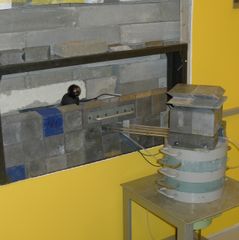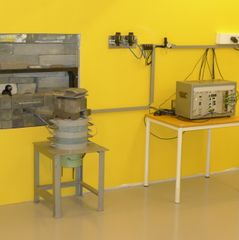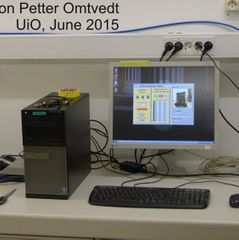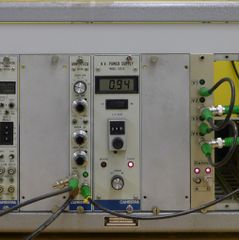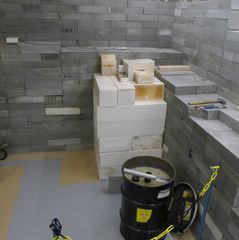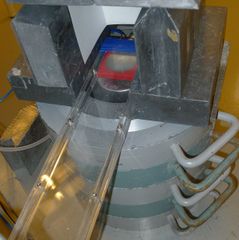Robolab Exercise - Neutron Activation of Silver
Run the Exercise
This exercise is currently offline while it is being upgraded to LabView NXG and the cloud service System Link. We plan to have the exercise available in the new version by the end of May 2020.
Booking
To book a time slot for using this remote controlled laboratory you must contact Jon Petter Omtvedt (UiO). Please provide full name, affiliation and when you would like to run the exercise. You will not be able to use the system before you have received a username and password.
Learning Goals
Upon completing this RoboLab exercise, students should be able to demonstrate:
Knowledge:
- Understand how neutrons can penetrate a stable nucleus and transform it into a radioactive one (nuclear reactions).
- Understand how Be mixed with a strong alpha-source will produce neutrons.
- Understand the in-growth of radioactivity in nuclear reactions, including saturation and dependence on half-life (advanced use).
- Understand the nature of statistical uncertainty in counting (advanced use).
Skills:
- How to compensate for background in nuclear measurements.
- How to measure and analyse a multi-component decay curve (manually or by using software).
- How to determine end-of-irradiation yields.
- How to obtain decay data from e.g. the Nuclear Chart and on-line databases and apply it to nuclear reactions and measurements (advanced use).
- Calculate yields in nuclear reactions (advanced use).
Introduction
This remote operated facility enable anything from a short demonstration of neutron activation to highly advanced experiments and calculations.
This exercise allows the student to activate an 11-g silver disk by exposing it to neutrons from a Be/238Pu neutron-source. After irradiation, the disk is pneumatically transported to a NaI detector where gamma emissions from 2.38-min 108Ag and 24.6-sec 110Ag can be measured. The detector is gated on the 580-700 keV region and will count 633-keV gamma (1.76% intensity) from 108Ag and 658-keV gamma (4.50% intensity) from 110Ag. The measurement is done as a time series. In this way the student can deconvolute the two-component decay curve to determine the end-of-irradiation disintegration rate of both silver isotopes. Advanced use of the experiment is to measure data for different lengths of irradiation time. Plotting the disintegration rate of both silver isotopes as a function of irradiation time will yield in-growth curves and provide a more detailed understanding of the kinetics of nuclear reactions (for students at an advanced level).
Sources of the type used for this experiment, a rather strong neutron source (about 370 GBq 238Pu mixed with Be powder in a steel encapsulation) is typically not widely available for student experiments. By using the remote controlled facility described here practical experience in neutron activation analysis and nuclear reactions can nevertheless be obtained. The n-source is surrounded by about 20 cm of paraffin. Outside this there is another layer of boron paraffin to absorb the neutrons. The n-source and shielding is placed behind a 1 m thick concrete wall, which reduced the background seen by the detector on the other side of the wall. A pneumatic track, 3 m long, transports the 11 g silver disk back and forth between the irradiating and counting position.
Student Guides
Theory
- Neutron Activation of Ag with a Pu\Be n-source
- How to Calculate End-of-Irradiation Yields of Ag-isotopes
Experimental Procedure
Neutron Activation of Ag
How to Measure the Decay of n-activated Silver
Analyzing a Two-component Decay Curve
Analyzing the Production Curve of n-activated Ag
Analysing the Data (to be written)
Teacher Guides
About learning benefits from this exercise (to be written)
How to prepare for using this exercise (to be written)
Notes on methods for analysing the data (to be written)
Alternative uses
This RoboLab setup can be used to investigate counting statistics and standard deviation related to measurement of radiation. Attenuate the count rate by selecting a suitable lead absorber thickness and have the students perform measurement series under identical conditions to observe the deviation in the number of counts.
Developed By
Jon Petter Omtvedt, Nuclear Chemistry Group
Department of Chemistry, University of Oslo, Norway
Feedback and Ideas from Users and Supervisors
Feedback and improvement ideas from users (student and teachers) for this RoboLab exercise - absorption of gamma radiation - is collected here.

